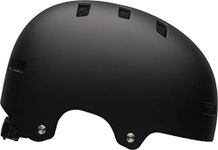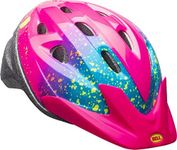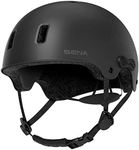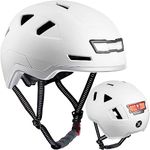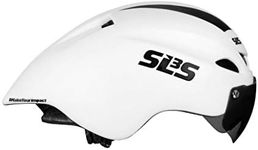Buying Guide for the Best Bell Bicycle Helmets
Choosing the right bicycle helmet is crucial for your safety while riding. A good helmet can protect you from serious head injuries in case of an accident. When selecting a helmet, it's important to consider several key specifications to ensure you get the best fit and protection for your needs. Here are the key specs you should focus on and how to navigate them.Fit and SizeThe fit and size of a helmet are critical for comfort and safety. A helmet that is too loose won't provide adequate protection, while one that is too tight can be uncomfortable. Helmets come in various sizes, usually measured in centimeters around the head. To find the right size, measure the circumference of your head just above your eyebrows. Helmets often have adjustable straps and retention systems to fine-tune the fit. Make sure the helmet sits level on your head and doesn't tilt forward or backward.
VentilationVentilation refers to the number and size of vents in the helmet, which allow air to flow over your head and keep you cool. This is especially important for long rides or hot weather. Helmets with more vents generally provide better airflow but may be less aerodynamic. If you ride in hot conditions or go on long rides, look for a helmet with ample ventilation. For short rides or cooler climates, fewer vents may be sufficient.
WeightThe weight of a helmet can affect your comfort, especially on long rides. Lighter helmets are generally more comfortable but may come at a higher price. Helmets are typically made from materials like polycarbonate or carbon fiber, which influence their weight. If you plan on long-distance cycling, a lighter helmet can reduce neck strain and fatigue. For casual or short rides, a slightly heavier helmet may not be an issue.
Safety StandardsSafety standards ensure that a helmet meets certain criteria for impact protection. Look for certifications like CPSC (Consumer Product Safety Commission) in the US, CE in Europe, or other relevant local standards. These certifications indicate that the helmet has passed rigorous testing. Always choose a helmet that meets or exceeds these safety standards to ensure maximum protection.
MIPS TechnologyMIPS (Multi-directional Impact Protection System) is a technology designed to reduce rotational forces on the brain during an impact. Helmets with MIPS have a low-friction layer that allows the helmet to slide relative to the head, reducing the risk of brain injury. If you are concerned about the highest level of protection, consider a helmet with MIPS technology. For casual riders, a standard helmet without MIPS may still offer adequate protection.
AdjustabilityAdjustability features like dial-fit systems, adjustable straps, and removable padding can help you achieve a more customized and comfortable fit. These features are important for ensuring that the helmet stays securely in place during a ride. Look for helmets with easy-to-use adjustment mechanisms. If you have a unique head shape or prefer a very precise fit, prioritize helmets with more adjustability options.
VisibilityVisibility features like bright colors, reflective elements, and integrated lights can enhance your safety by making you more visible to drivers and other cyclists. This is particularly important for riding in low-light conditions or busy traffic. If you often ride at dawn, dusk, or night, look for helmets with high-visibility features. For daytime riding in low-traffic areas, this may be less critical.




